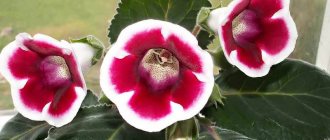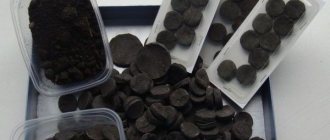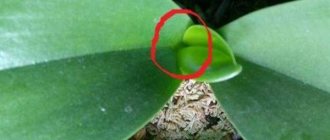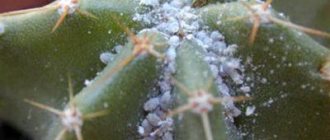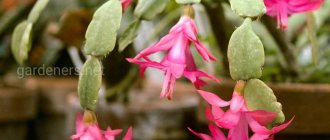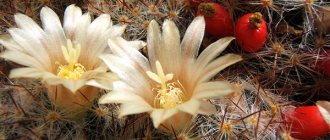For cacti, the most natural color of the skin and greenish, yellowish or grayish color of the needles. But in nature there are also representatives of this group of plants that are more exotic in color. There are not too many such varieties. In addition, a cactus can acquire an unusual shade or even become multi-colored as a result of some tricks.
Why cacti don't bloom: main mistakes in care
Home care
The plant looks aesthetically pleasing and original, and requires a minimum of care.
Watering
In the spring, the cactus needs to be watered more often, and in other seasons, just like other indoor plants.
In the fall, it is best to completely limit watering. At this time, it needs to be watered rarely and little by little. In the summer, the cactus needs to be sprayed with a spray bottle.
Temperature
Like many cacti, Gymnocalycium is thermophilic. In the summer, it feels good at temperatures of +20, +30 degrees, and in winter the temperature should be reduced to +18 degrees.
Indoor Gymnocalycium needs bright sunlight, but in the summer heat it can get burned, especially if it is standing on the south side of the window.
Priming
The soil for the cactus should be slightly acidic or neutral; the cactus cannot tolerate acidic soil. You can use ready-made soil for such plants or make it yourself. To do this, you need to mix humus, peat, sand, expanded clay and charcoal in equal proportions.
Trimming
The plant needs pruning only if the roots rot:
They begin to water the plant after pruning three days later.
Pot
It is best to choose a clay pot for cacti , as the water will evaporate well in it. There is no need to use a pot that is too large; its walls should slightly touch the roots of the cactus.
Top dressing
At the time of flowering, the plant should be provided with frequent feeding from March to November.
You will need specialized fertilizer specifically for cacti. You need to feed twice a month. In winter, the cactus is not fed.
Transfer
The cactus should be replanted once every two or three years. For this:
Wintering
In winter, the cactus is at rest , so the air temperature in the room should not be higher than +18 degrees. There is no need to feed or water the plant at this time of year.
Problems during cultivation
Problems when growing Gymnocalycium indoors arise from improper care of the plant. Most often, flower growers encounter the following troubles:
| Problem | Causes | Ways to correct the situation |
| Growth slowdown |
| Transplant the cactus into slightly alkaline soil and water it only with filtered water at room temperature |
| No flowering | Unsuitable living conditions in winter | In order for the gymnocalycium to bloom next year, it is necessary to move it to a cool and dry room in winter. |
| Dropping buds |
| The cactus must be protected from drafts and provided with additional lighting. |
| The appearance of spots at the base of the trunk | Overwatering | Water the cactus only when the top layer of soil dries out. |
If the base of the cactus has darkened, but remains dry and hard to the touch, then this phenomenon indicates the beginning of the suberization process. In this case, no special measures should be taken.
Reproduction by seeds and shoots
Cactus reproduces in two ways - by seeds and shoots.
Seeds
It is difficult to propagate the plant in this way, but in this case you can get a more hardy species. With this method of reproduction, the characteristic features of the species are lost.
For reproduction you will need:
Shoots will appear after ten days.
By shoots
If the plant is propagated using this method, grafting is also necessary.
This method is the simplest and most effective; many shoots take root quickly.
The shoots must be separated carefully without damaging the main stem. Otherwise, it will lead to infection.
Similar cacti
Gymnocalycium unites a wide variety of cacti. Below are the most popular ones:
Gymnocalycium japonica is a spectacular cactus that is easy to grow at home. You can collect a whole collection of different colors and shades of this plant and then your windowsill will look like a coral reef at any time of the year.
If you find an error, please select a piece of text and press Ctrl+Enter.
Source
About coloring
When you see painted cacti, the question involuntarily arises: “Why are they painted?”
The thing is that most people are not able to appreciate the natural beauty of succulents. They rarely bloom; the gloomy green color often repels lovers of delicate shades. Sellers cleverly take advantage of this and, in order to increase demand for cacti, paint them in different colors. It is not surprising that hardly anyone will pass by such beauty. The dyeing procedure is completely harmless to the plant. The main thing is to use a safe dye, and then the succulent will not notice the introduction of a foreign substance. After just a few months, a slight tint will appear.
Important! The plant does not need tinting, so it is worth remembering that it will take years to obtain a bright color.
Below you can see a description and photo of cacti with painted and naturally colored needles, stems and bright flowers.
Gymnocalycium Michanovich
Our guest today is Gymnocalycium Mihanovichii , or as it is often called, Moon Cactus (Gymnocalycium Mihanovichii - Moon Cactus) native to Argentina and Paraguay. This cactus was first discovered by the Czech traveler Alberto Vojtecha Frich. Since all his expeditions were sponsored by Nikolas Mikhanovich, this species was named after him.
Lighting
Like all representatives of the genus Gymnocalycium, this species is very demanding on lighting - bright light is necessary. However, it should be remembered that at different times of the year the amount of direct sun on the plant plays a vital role. In autumn and winter, it is necessary to supplement the plant with phytolamps. In the summer months and late spring, you should be more careful when approaching midday light. It is direct sunlight in the brightest and hottest weather that can cause burns.
Recommended varieties
- Only needles. Almost any cacti with needles are suitable for such an operation, and the thicker and longer they are, the more clearly their color will appear. You just need to add the food coloring you like to the soil mixture/soil in advance, bright and noticeable against the green background of the cactus. Varieties: Notocactus, Echinocactus, Acanthocalycium, Rebutia, Mammillaria, Austrocylindropuntia Subulata, Cephalocereus, astrophytum cacti, mini-cacti.
- Full color. Only Gymnocalycium Mihanovich, Stenopleurum and the yellow-stemmed form of Chamecereus, grafted onto other “mother” cacti (for example, Echinopsis) that are not capable of extreme chlorophyll-free existence, are suitable for this procedure.
Variety of species: names and characteristics
It has a flattened stem that is either grayish-green or brownish-reddish in color. Gymnocalycium michanovicha blooms in red, white, pink, yellow or orange flowers.
This cactus is brown, red-brown or lilac-burgundy. It contains the least chlorophyll. The common people call it “Little Red Riding Hood” for its appearance.
This is a form of Gymnocalycium Friedrich. Due to the complete absence of chlorophyll, the plant has a bright stem color. The most common colors are deep yellow or red. This species is grafted onto any green variety, because it cannot take root in the ground. It turns out a very beautiful mix of bright, rich shades.
A dark green cactus with a flattened, spherical stem covered with small yellow spines. The cactus has 4-6 rounded ribs. In late spring, hippocalycium blooms with lilac-pink flowers with pink stripes in the center of the petal.
It is grown in groups. The cactus does not like abundant watering and excess light. Its flowers form bushes of many bright yellow heads.
Begins to bloom earlier than other varieties. Already in early summer, purple flowers will appear. And the stem of Gymnocalycium baldiamum is gray-green with a blue tint.
Painted stems
They try to paint the plant in poisonous (acidic) colors. Firstly, this will attract the buyer’s attention more strongly, and secondly, a strong pigment is always absorbed much faster and appears better. However, everything depends only on desire. Yellow, pink and purple shades will add tenderness to the cactus and cover up the “threatening” needles.
Nature has endowed many plants with blue, azure, cyan and sapphire shades. But, unfortunately, the same cannot be said about cacti. Not only the stem, but also the flowers of the “thorny friend” do not differ in the palette of these amazing colors. In this regard, the person decided to get rid of generally accepted conventions. More and more blue cacti are appearing on store shelves. Moreover, this color, along with purple and red, is well absorbed by the plant.
Home care
Gymnocalycium is easy to care for. The cactus is very persistent. Perfect for beginner gardeners. Gymnocalycium is unpretentious. To care for it at home, just follow the following recommendations.
Autumn and winter are quiet times for Gymnocalycium. If there is little light, it is recommended to provide additional artificial lighting.
Gymnocalycium does not tolerate excess moisture. Water it as it dries with warm water that has settled for a day or two. In summer, watering will be plentiful, and closer to autumn it will be reduced. Spraying with water is not recommended. This causes white marks to appear on the plant.
NOTE
In cold weather, reduce watering to two or three times per season.
For planting, you can buy ready-made soil for cacti at a gardening store. Or make a suitable mixture yourself. To do this, mix humus, peat, turf in equal quantities and add a little brick chips and charcoal.
Feed Gymnocalycium in spring and summer at intervals of 1-2 weeks with special fertilizers for cactus plants. In winter, the cactus goes into a dormant state, so it is better to interrupt feeding.
The plant should be replanted in the spring. The pot is a little larger than the old one. The cactus is quite comfortable blooming in cramped conditions. Young gymnocalycium is replanted annually, and an adult every four years.
The humidity can be any. The cactus thrives in both dry and humid climates.
There is no need to specially moisten it by spraying.
Colored succulent - genetics or nature?
As it turned out, some varieties received unusual colors from nature, while others were tinted artificially or their genotype was changed by engineers in the relevant field. As a rule, only a person can give a bright, neon shade to a plant, but succulents of calm, muted tones are also found in the natural environment.
If a cactus grower wants to give his initially green pet an unusual color, but does not have knowledge of genetic engineering, then there is only one option left, to buy another specimen that already has the desired color. The most common echinocactus found on sale is Gruzoni red.
The first person to breed a red succulent was the Japanese biologist Watanabi. As a basis, he took the sprout of Gymnocolicium, which, thanks to an often natural mutation, was covered with reddish spots. Having cut out the reddish areola, he vaccinated against Echinopsis. Taking a red areola from a grown succulent, the biologist again grafted it onto a green specimen.
It took quite a lot of time and effort to finally produce a cactus with a completely red color, grafted onto a green Echinopsis.
Needless to say, the unusually colored gymnocalyciums aroused interest in the cacti growing community, where they immediately became real stars. Every self-respecting cactus grower dreamed of getting one or two unusual specimens. Then their cost was quite high.
Later practice showed that red cacti reproduce well if you use the grafting method - the baby is grafted onto a green cactus to get a gymnocalycium with a brightly colored cap. But the baby, planted in the ground, unfortunately dies.
The most popular of the painted cacti that are found on sale are Echinocactus Gruzoni, Myrtillocactus geometrica, Cereus, Gymnocalycium.
Reproduction
There are two ways to propagate Gymnocalycium: by seeds and by lateral layering.
The first method makes it possible to obtain higher quality and healthier offspring. The seeds are planted in a small pot with a moistened mixture. Before planting, the soil must be calcined in the oven for disinfection. At first, it is better to cover the seeds with a film or a lid so that the soil is constantly moist. At the same time, do not forget to spray or water through the pan. A temperature of 18-20 degrees is suitable for seed germination. Within a year, the seedlings can be planted in separate pots. You can plant seeds at any time of the year. The main thing is to comply with all conditions.
The second method is simpler. It is necessary to separate the side cuttings from the main stem and dry the cut area for several days. To do this, place the shoot on the newspaper. Let it sit for a few days. Then we plant it in moist soil. It will take root very quickly, and you need to care for it like an adult cactus. If the children have roots, then you need to carefully dig it out and transplant it into a separate pot.
Engraftment of scion children
In early April, using clockwise and counterclockwise movements, carefully separate the pups from the Gymnocalyciums of Michanovich, Stenopleurum or yellow-stemmed Chamecereus and make an even cut at the base of each of the pups with a disinfected scalpel. Then make cuts of a similar diameter on the rootstocks - “mother” cacti, which will subsequently supply chlorophyll and nutrients to your colored migrants. Make sure the cuts fit snugly using soft rubber bands over the scions. Pour a standard dose of water and cover each scion with a transparent glass jar so that a little air enters it. Place the pot with migrants in a room with a temperature of + 28-30⁰С in a shaded room. After about a day, the jar can be removed, and the plant is gradually accustomed to moderate light.
The lifespan of grafted colored cacti is approximately 2 years, but if you sincerely love them and care for them properly, your prickly friends will live much longer than this and perhaps even delight you with their grateful blooms.
Graft
Vaccination is necessary for non-chlorophyll cacti. Such gymnocalyciums are red in color. It is difficult for them to grow separately, so the best option for them is crossing with a green cactus. The result is a very beautiful variety with green and red stems at the same time.
Gymnocalyciums are grafted in the same way as other cacti. Cuts are made on both plants. They are connected by connecting the conductive bundles. And, having chosen the desired position, secure it with a bandage. The main thing is not to fasten it too tightly. The bandage is not removed for a week.
Needle tinting technology
The thorns are given a different color using irrigation liquid. The water is left to settle, mixed with food coloring until a rich color is achieved, and the cactus is watered as usual.
The shade will appear within a month and a half, but to achieve a rich color, the procedure must be repeated for six months or longer. Young cacti color much faster than adults.
You can also paint needle-shaped succulents by adding pigment to the soil.
This should be done according to the following scheme:
- Take three parts of dye to one part of the soil and plant the cactus at the bottom of the pot.
- Fill the root system of the plant with the resulting mixture.
- Fill the rest of the container with standard or colored substrate.
As the cactus grows, its roots absorb pigment from the ground, gradually coloring the needles. The period lasts 6 months or more.
Food dyes for coloring succulents use only natural ones: chemical additives harm the plants. The final color of the needles depends on the saturation and tone of the dye, but it will not exactly match the shade of the coloring agent. For example, a red dye will give the thorns a pinkish tint, a deep blue dye will give them a blue tint, and a soft dye (pale pink, purple) will only tint them slightly.
To obtain purple needles, the cactus must be treated alternately with red and blue pigments. If you use pure lilac, they may turn black.
It is not advisable to choose large or rapidly growing plants for artificial coloring. There is a possibility that their spines will not have time to change color under the standard watering regime.
Diseases and pests
The red flat mite causes the greatest damage to cacti. Gymnocalycium has a very thick skin, so the pest rarely settles on it. Mostly young sprouts with thin, fragile skin are at risk. The appearance of a tick can be identified by dry, rust-colored spots. To get rid of it, spread the stems with ethyl solution or rinse under running hot water. You can, of course, buy a universal pesticide, but it is better to do this in extreme cases, when not just one, but an entire family of cacti is under threat.
Mealybugs can settle on the roots or stems of Gymnocalycium . This is a small pinkish worm that sucks the sap from plants. It can be seen with the naked eye. If the pest settles in the roots of the plant, then the flowers stop appearing and the gymnocalycium no longer grows. To get rid of scale insects, rinse the roots with hot water for a long time or buy special medicines in the store.
In addition to pests, Gymnocalycium is susceptible to rot. They occur if the plant is watered too intensely or kept at the wrong temperature. Most often the roots are affected. To save the cactus, you need to rinse the affected areas with hot water. Cut off all rot, and disinfect the healthy part with crushed coal or fungicidal preparations. Then dry the roots for several days and plant them in a new pot.
Source
Echinocactus Gruzona
The name of a cactus with colored needles, and natural ones, is known to many succulent lovers in our country and around the world. Echinocactus Gruzona is a native of distant Mexico. In natural conditions, specimens with a height of more than 100 cm are found.
The species received its name in honor of the engineer Herman Gruzon (1891), who collected the largest collection of cacti. Subsequently, it was donated to the city of Magdeburg. This species, which combines six common spherical succulents, received its name Echinocactus because of their shape and the presence of sharp long spines. There are thorns of bright yellow, amber or pale golden color, which contrast effectively with the dark green trunk.
